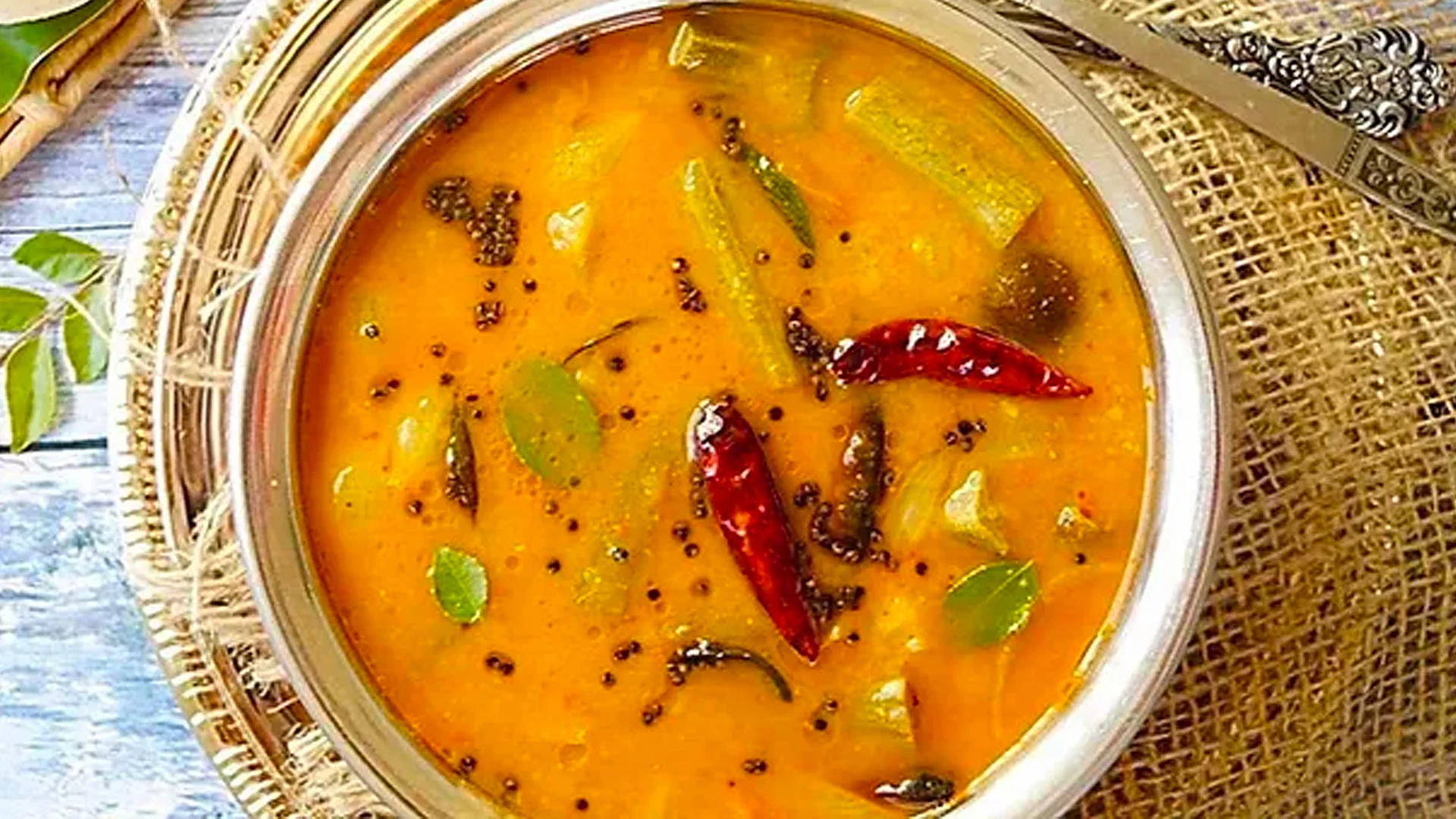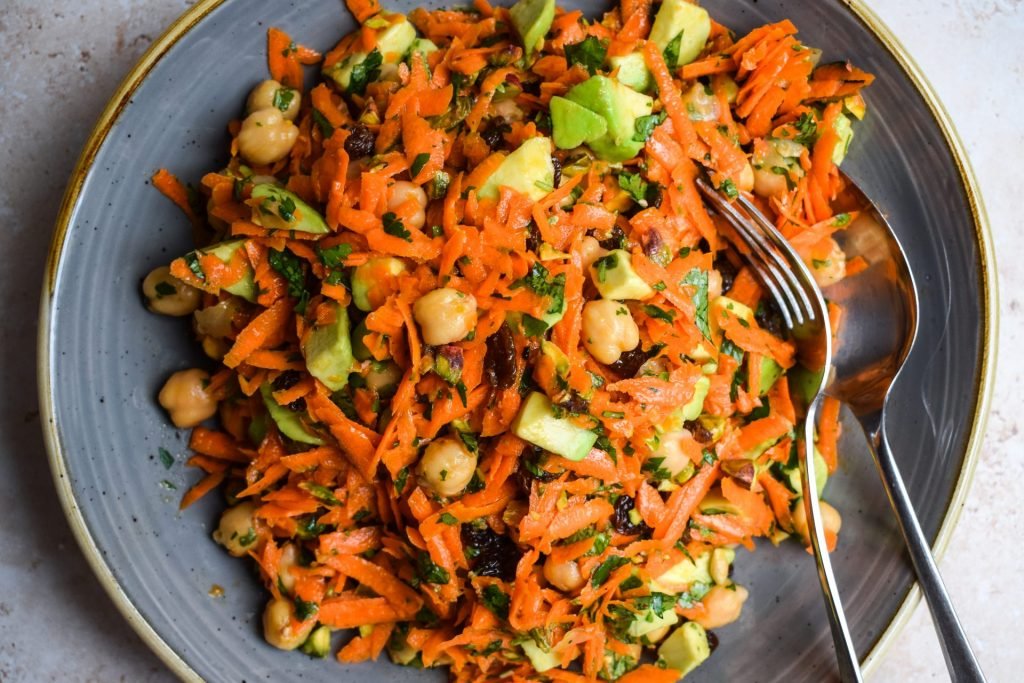Sambar, a rich and flavorful South Indian lentil stew, is a beloved dish often served alongside rice, idli, or dosa. Traditionally made with vegetables like carrots, okra, or tomatoes, Butternut Squash Sambar offers a delightful twist on this classic, incorporating the natural sweetness of butternut squash into the mix. The combination of hearty lentils, tangy tamarind, and aromatic spices creates a soul-satisfying dish that’s perfect for any meal.
At Foodies Haven, we believe that food should bring warmth and comfort to the table, and Butternut Squash Sambar is just the recipe to do that. Whether you’re looking for a nutritious dinner or a unique twist on your usual sambar, this recipe is guaranteed to become a new favorite.
🥄 Why Butternut Squash in Sambar?
Butternut squash is a versatile vegetable with a subtle sweetness that pairs beautifully with the bold and savory flavors found in sambar. The squash’s soft, velvety texture becomes tender when cooked, absorbing the flavors of the sambar broth. Additionally, butternut squash adds a lovely orange hue to the dish, making it visually appealing and nutritious.
Here’s why this version of sambar stands out:
- Sweetness of the squash balances the tanginess of tamarind and the heat from spices.
- The squash adds a boost of fiber, vitamins, and antioxidants, making the dish both comforting and nourishing.
- It’s a great option for vegetarians and vegans, as it’s entirely plant-based and packed with protein from the lentils.
🍴 Ingredients You’ll Need
For Butternut Squash Sambar, you’ll need a variety of pantry staples and fresh ingredients. Here’s what to gather:
For the Sambar:
- 1 cup toor dal (pigeon peas) (You can also use moong dal or masoor dal if you prefer)
- 1 small butternut squash, peeled, seeded, and diced into small cubes
- 1 medium onion, chopped
- 1 tomato, chopped
- 1/4 cup tamarind paste (or 2 tbsp of tamarind pulp)
- 1-2 green chilies, slit (adjust based on heat preference)
- 1/2 tsp turmeric powder
- 1 tsp sambar powder (a South Indian spice blend)
- 1 tsp red chili powder (optional, for added heat)
- Salt to taste
- 6-8 curry leaves (fresh or dried)
- 2 tbsp oil (vegetable, coconut, or sesame oil)
- 3 cups water (adjust for consistency)
For Tempering (Tadka):
- 1 tbsp ghee or oil (ghee adds a rich flavor)
- 1 tsp mustard seeds
- 1/2 tsp cumin seeds
- 1 dried red chili
- 1/2 tsp asafoetida (hing) (optional but adds a great aroma)
- 2-3 cloves garlic, minced
- 1/2 tsp fenugreek seeds (optional, for additional depth of flavor)
🔥 How to Make Butternut Squash Sambar
Step 1: Cook the Lentils
In a large pot, rinse the toor dal thoroughly under cold water. Add it to the pot along with 3 cups of water. Bring the water to a boil, then reduce the heat to a simmer. Skim off any foam that rises to the surface.
Simmer the dal for about 15-20 minutes or until it becomes soft and mushy. You can use a pressure cooker to speed up the process — cook on high pressure for about 4-5 whistles.
Step 2: Cook the Butternut Squash
While the lentils are cooking, heat 2 tbsp of oil in a separate pan over medium heat. Add the chopped onion and sauté until it becomes soft and translucent (about 5 minutes).
Add the chopped tomato and cook for another 3-4 minutes, until the tomato softens and blends with the onions. Next, add the green chilies, turmeric powder, sambar powder, and red chili powder (if using). Stir everything together and cook for a minute or so to release the flavors of the spices.
Add the diced butternut squash to the pan and toss it with the onion-tomato-spice mixture. Cook for another 5 minutes, allowing the squash to absorb the spices.
Step 3: Add the Tamarind and Simmer
Add tamarind paste to the pot of cooked lentils. If using tamarind pulp, dissolve it in a little water before adding. Add the sautéed butternut squash and onions to the dal, stirring gently to combine.
Add about 1 cup of water to adjust the consistency of the sambar to your liking (some prefer it thicker, while others like a more soupy version). Bring everything to a boil and then reduce the heat. Let the sambar simmer for 15-20 minutes until the butternut squash becomes tender and the flavors meld together.
Step 4: Prepare the Tempering (Tadka)
In a small pan, heat 1 tbsp of ghee or oil. Once hot, add the mustard seeds and let them pop. Add the cumin seeds, dried red chili, and asafoetida (hing), and stir for a few seconds until aromatic.
Add the minced garlic and sauté until it turns golden brown. Then, add the curry leaves and stir for another 30 seconds. Pour this tempering over the simmering sambar and stir well.
Step 5: Final Adjustments and Serve
Taste the sambar and adjust the seasoning with salt or more tamarind if needed. If the sambar is too thick, add more water and bring it to a simmer.
Let the sambar simmer for another 5 minutes, allowing the tempering flavors to blend with the rest of the dish. Once ready, turn off the heat.
🍽️ How to Serve Butternut Squash Sambar
Butternut Squash Sambar can be served in various ways, making it a versatile dish for any meal. Here are some serving suggestions:
- With Rice: Traditionally, sambar is served with steamed white rice or brown rice. The comforting combination of rice and sambar is a classic favorite in South Indian homes.
- With Idli or Dosa: Pair the sambar with idli (steamed rice cakes) or dosa (crispy rice crepes) for an authentic South Indian breakfast or dinner.
- With Chapati or Paratha: For a non-rice option, sambar can be enjoyed with flatbreads like chapati or paratha for a hearty meal.
🥄 Tips for Perfect Butternut Squash Sambar
- Adjust the Spice Level: The heat in sambar comes from the sambar powder and green chilies. Adjust the number of chilies or omit the red chili powder if you prefer a milder version.
- Use Fresh Tamarind: If you can find fresh tamarind, use it instead of tamarind paste. Soak the tamarind in warm water, extract the pulp, and add it to the sambar for a fresher, tangier taste.
- Customize the Vegetables: While butternut squash is a fantastic addition, feel free to add other vegetables like carrots, beans, or eggplant for variety.
- Cook the Dal Well: The key to a smooth sambar is cooking the dal until it’s soft and mushy. This will create a creamy base for the sambar.
🌟 Final Thoughts: A Nourishing, Flavorful Dish
Butternut Squash Sambar is the perfect blend of comfort and nutrition. The earthy lentils, tangy tamarind, and aromatic spices come together in a way that will leave you craving more. Adding the naturally sweet butternut squash gives the dish a unique twist that makes it stand out from other traditional sambar recipes.
Whether you enjoy it with rice, idli, dosa, or even just on its own, Butternut Squash Sambar is a warm, hearty meal that will fill you up and nourish you. Plus, it’s an easy way to incorporate more vegetables and legumes into your diet without compromising on taste.
So, next time you’re looking for a wholesome, flavorful meal, give this South Indian classic a try and enjoy the wonderful blend of flavors and textures.
For more delicious, globally-inspired recipes, visit Foodieshaven.site — your destination for satisfying, flavorful meals.


